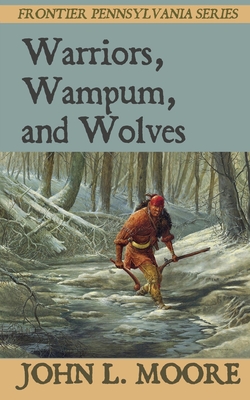Warriors, Wampum, and Wolves

Warriors, Wampum, and Wolves
In April 1753, frontier missionary David Zeisberger prepared for a month-long voyage up the Susquehanna River's North Branch by walking along the river bank at present-day Sunbury and selecting a suitable tree to fashion into a dugout canoe.Zeisberger and another missionary felled the tree, then spent two days hollowing its trunk into the shape of a canoe, before setting sail. A month later they came upon a fleet of 25 canoes carrying Nanticoke Indians upriver. "As far as the eye could reach, you could see one canoe behind the other along the Susquehanna," the missionaries wrote.Zeisberger is one of many real characters who people the pages of this non-fiction book about the Pennsylvania frontier. Others include Shikellamy, the Iroquois half-king at Shamokin; Conrad Weiser, the Pennsylvania colony's Indian agent; Teedyuscung, king of the Delawares; Benjamin Franklin, builder of frontier forts; and a Delaware war chief known as Shingas the Terrible.Author John L. Moore used journals, letters, official reports and other first-person accounts to portray the frontiersmen and the events and conflicts in which they were involved.The stories are set mainly in the valleys of the Delaware, Juniata, Lehigh, Ohio and Susquehanna rivers.WHAT OTHERS SAY: "Moore brings us an engaging treatment of Gen. Edward Braddock's ill-fated campaign in 1755 to oust the French from the Ohio Valley. His account gives us a fresh perspective of something often lost in the histories of this march through the wilderness - the troubles the British army experienced with logistics and their erstwhile Native American allies."Moore includes a later description by Moravian missionary John Heckewelder of how horses' hooves made 'dismal music' as they walked over the unburied bones of Braddock's soldiers. But Moore's book is overall about a lost world of encounters in the forest between the colonial Americans and the Iroquois and Delaware - the tree paintings along trails and the travails of a Seneca given the English name of Captain Newcastle. It's a world worth visiting." Robert B. Swift, Author of "The Mid-Appalachian Frontier: A Guide to Historic Sites of the French and Indian War.""One can't go wrong with this work. It's the kind of tale one might read aloud to one's children out in the woods at evenings while huddled around a campfire." Thomas J. Brucia, Houston, Texas, bibliophile, outdoorsman and book reviewer."As someone who despised history classes in high school and practically fe
PRP: 92.61 Lei
Acesta este Prețul Recomandat de Producător. Prețul de vânzare al produsului este afișat mai jos.
74.09Lei
74.09Lei
92.61 LeiLivrare in 2-4 saptamani
Descrierea produsului
In April 1753, frontier missionary David Zeisberger prepared for a month-long voyage up the Susquehanna River's North Branch by walking along the river bank at present-day Sunbury and selecting a suitable tree to fashion into a dugout canoe.Zeisberger and another missionary felled the tree, then spent two days hollowing its trunk into the shape of a canoe, before setting sail. A month later they came upon a fleet of 25 canoes carrying Nanticoke Indians upriver. "As far as the eye could reach, you could see one canoe behind the other along the Susquehanna," the missionaries wrote.Zeisberger is one of many real characters who people the pages of this non-fiction book about the Pennsylvania frontier. Others include Shikellamy, the Iroquois half-king at Shamokin; Conrad Weiser, the Pennsylvania colony's Indian agent; Teedyuscung, king of the Delawares; Benjamin Franklin, builder of frontier forts; and a Delaware war chief known as Shingas the Terrible.Author John L. Moore used journals, letters, official reports and other first-person accounts to portray the frontiersmen and the events and conflicts in which they were involved.The stories are set mainly in the valleys of the Delaware, Juniata, Lehigh, Ohio and Susquehanna rivers.WHAT OTHERS SAY: "Moore brings us an engaging treatment of Gen. Edward Braddock's ill-fated campaign in 1755 to oust the French from the Ohio Valley. His account gives us a fresh perspective of something often lost in the histories of this march through the wilderness - the troubles the British army experienced with logistics and their erstwhile Native American allies."Moore includes a later description by Moravian missionary John Heckewelder of how horses' hooves made 'dismal music' as they walked over the unburied bones of Braddock's soldiers. But Moore's book is overall about a lost world of encounters in the forest between the colonial Americans and the Iroquois and Delaware - the tree paintings along trails and the travails of a Seneca given the English name of Captain Newcastle. It's a world worth visiting." Robert B. Swift, Author of "The Mid-Appalachian Frontier: A Guide to Historic Sites of the French and Indian War.""One can't go wrong with this work. It's the kind of tale one might read aloud to one's children out in the woods at evenings while huddled around a campfire." Thomas J. Brucia, Houston, Texas, bibliophile, outdoorsman and book reviewer."As someone who despised history classes in high school and practically fe
Detaliile produsului









